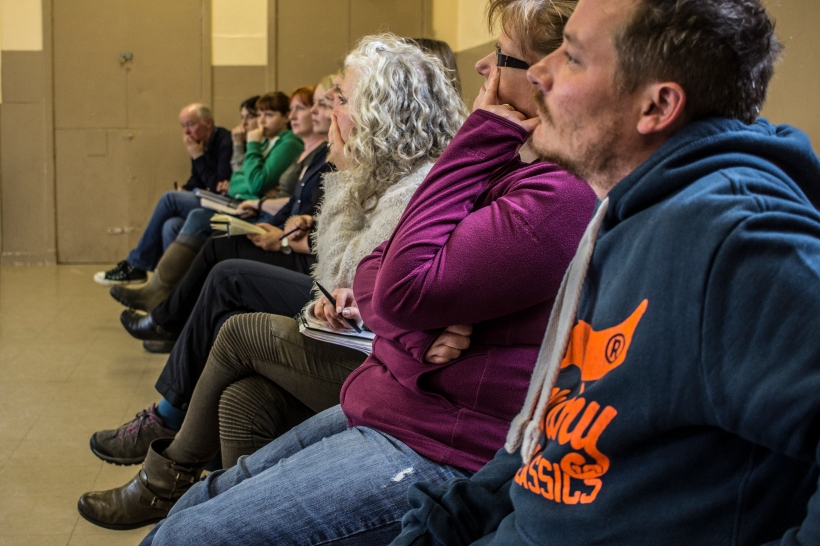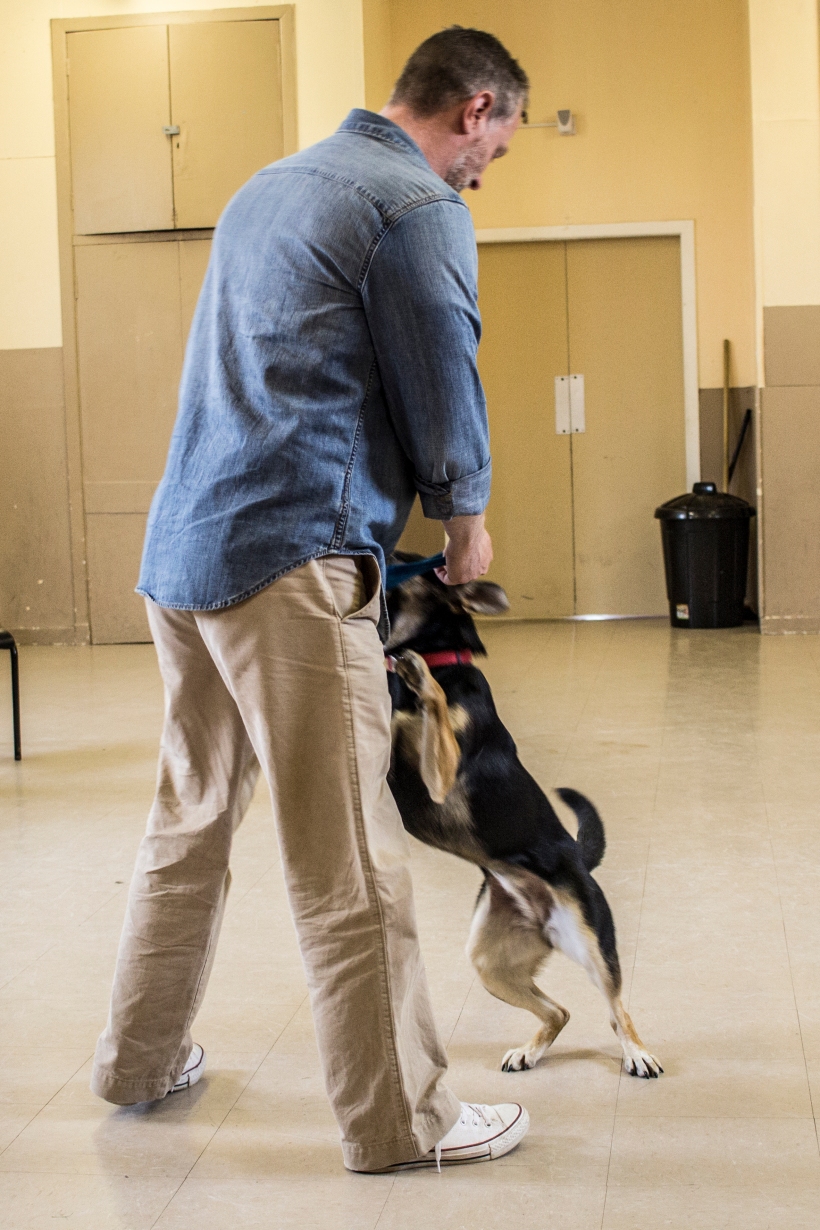Guest blog from Lindsay Docherty. Lindsay first came to me as a client a few years ago with Millie. Since then she has been studying both with the IMDT, and with Clare Russell and myself. She has been doing some work for me over the last few months.
Living with a dog in pain.
Living with a dog with a chronic pain condition can be difficult. There are two types of dogs, those who will suffer through the pain without any change in behaviour and those who suddenly feel under threat from their world.. The change in behaviour can range from a slight reluctance to perform tasks to the drastic who’s behaviour can change completely.
We currently have a dog who falls under the last category.
Millie is our 6 year old rescue dog. At the young age of 1 year old she had a bad fall and suffered internal injuries similar to those of a high speed impact in a car. Collapsed lung, bruised heart and a torn liver not to mention a huge amount of muscle damage.
Our happy friendly pup was now on a long journey of pain management and behaviour change. The changes didn’t happen over night. As her world suddenly became filled with danger and potential hurt to her she modified her behaviour to try and control it. Previously she was every dogs friend and used to love nothing more than a full on sparring session. This was now her idea of a nightmare. Her “friend” dogs were suddenly hurting her. In her mind it wasn’t that she was experiencing discomfort and the other dogs happened to be there it was the dogs themselves that were hurting her.
She’s now really sensitive to changes in her environment. A break in her routine unsettles her and can last for days.
People approaching her in the street spooks her. Visitors to the house is really difficult as she doesn’t want to be touched and that’s what most people want to do with a dog.
When travelling in the car she won’t lie down if she’s having bad pain day.
After a year and a half on and off medication and us making pretty much every training mistake you can during that time the pain had eased off enough to begin behaviour modification training.
Us learning the right approach to take and how to make her feel safe were the first steps.
She’s predictably unpredictable so if we work with the thinking that she’s going to react to everything we can set up the environment to help her make the right choice even in the toughest of situations.
Dogs
As a puppy Millie was Mrs sociable though still a bit nervous around dogs that were quite full on.
After the fall the pain made her completely change in these situations and rather than removing herself she would lunge and bark and tried to get on top of the dogs that she was afraid of. In fight or flight terms she was definitely using the fight method to get the dogs to go away. Luckily she never progressed any further than a lunge and a bark.
Our initial goal was teaching her to remove herself from situations around other dogs that she previously would have reacted to and helping her when she couldn’t do it on her own.
Millie likes to control her own environment and the movement of dogs within it. We haven’t stopped her from doing this but instead heavily reinforced lower intensity behaviours. If she doesn’t want a young bouncy dog to jump on her that’s fair enough so strong eye contact with the dog or a low grumble are far better than a full on lunge, bark and pinning the dog to the ground.
We have to come up with a compromise with her where she can keep herself feeling in control and more importantly not be hurt but also that the other dogs we meet are kept safe.
We spent a long time teaching her avoidance before we let her start meeting other dogs. Only through persistence with the avoidance training and setting this up as the primary behaviour to perform around dogs were we sure that if she felt unsafe she would disengage and come to us for reinforcement for doing so rather than feeling she had to deal with the situation on her own.
If she isn’t happy with a dog’s presence and the dog doesn’t leave we ask her to come with us and we will take her away to a distance she feels safe whilst heavily reinforcing the moving away.
She’s now at the stage where she is able to make some pretty amazing choices in previously highly reactive situations. This can however change depending on the intensity of her pain from day to day.
If she’s having a bad day we take a few steps back and ask her what’s the best behaviour she can give us that day and work with that. Doing so she learns that we can ask her how she’s feeling that day and we won’t put pressure on her to give more than she can.
Something as simple as lying down in the front of car is too much for her some days. If we ask her to lie down and she doesn’t after a couple of requests we don’t get mad. She isn’t disobeying us she just simply can’t do it at that time.
As well as being on the initial stage of my dog trainer journey I am also a part time dog walker. Knowing Millie and how she feels about strange dogs I was able to introduce her to the new dogs whilst keeping her feeling safe around them and I’m happy to say that she now has a bunch of great K9 friends that she can run, play and wrestle with when we are out on our walks.
The first time she initiated play with one of the dogs I was I was in floods of tears whilst trying to video it! A real turning point for us as it had been 3 years since she had initiated play with a dog other than the other dog in our house Leo.
Living with a dog in pain isn’t easy. It’s a full time job especially if they are reactive. We are very lucky in that our good days are so good they make up for all the bad times. We love our girl, and by understanding her body language and what she needs from us to be successful, help to build the dog and owner bond every day.



 #
#




